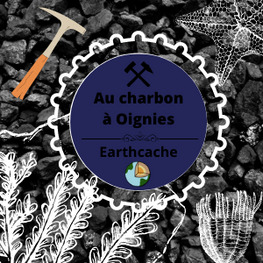

Cette cache a été posée à l'occasion du Mega évent "Au Charbon" à Oignies GC9XH0Z. Ce rassemblement a été voulu par les organisateurs comme un moment de convivalité entre passionés de Geocaching, de nature et de patrimoine. Notre volonté est de permettre à chaque profil de joueur de pouvoir pratiquer ce loisir comme il le souhaite et de partager avec d'autres des moments de rassemblement et de partage autour d'un site emblématique du bassin minier du Pas-de-Calais : Le carreau de fosse du 9-9bis de Oignies.
Brachiopoda!
Cette Earth Cache a pour but de vous faire découvrir les Brachiopodes.
Brachiopodes, Bivalves et Gastéropodes
Tout le monde connaît les animaux à coquille. Beaucoup sont marins, comme les moules, les coquilles Saint-Jacques, les bigorneaux, d'autres sont terrestres, comme les escargots.
Moules et coquilles Saint-Jacques sont des Bivalves, bigorneaux et escargots sont des Gastéropodes. Et les Brachiopodes dans tout ça? Dominant les Bivalves et les Gastéropodes pendant l'ère primaire (le Paléozoïque) ils sont désormais peu nombreux.
Quelles différences entre Brachiopodes, Bivalves et Gastéropodes?
Un Gastéropode est un mollusque aquatique ou terrestre muni d'un large pied ventral et le plus souvent d'une coquille spiralée à une seule valve (l'escargot par exemple). Ils sont facilement distinguables des Bivalves.
La classe des Bivalves (Bivalvia) a été créée en 1758 par Linnée, et regroupe l'ensemble des animaux à coquilles à deux valves. En 1824, dans un traité de conchyliologie (l'étude des mollusques à coquille) les scientifiques remarquent que certains ont deux valves identiques, et d'autres deux valves asymétriques; ils créent donc deux groupements, les "bivalves réguliers" et les "bivalves irréguliers". Ce n’est qu’après 1850 et l’étude de spécimens vivants de ces "bivalves irréguliers" qu’il a été démontré que ces animaux n’ont rien à voir avec les Bivalves. La classe des Brachiopodes (Brachiopoda) était née.

Un Gastéropode

Un Bivalve

Un Brachiopode
Quelles différences entre Brachiopodes et Bivalves?
Les Brachiopodes ont un plan de symétrie perpendiculaire au plan d'accolement des deux valves, alors que les Bivalves ont un plan de symétrie passant entre les deux valves. De plus, les Brachiopodes possèdend un pied (le pédicule) lui permettant de s'accrocher au substrat - rocheux par exemple.

Symétrie d'un Brachiopode et d'un Bivalve
Une autre différence majeure est la présence du lophophore: une structure d'où s'élancent des filaments ciliés, qui capturent le plancton et l'emmènent ensuite à la bouche (tandis que les bivalves se nourrissent en absorbant de l'eau, qui est filtrée à l'intérieur de la coquille et rejetée ensuite).

Anatomie d'un Brachiopode montrant le lophophore
Exceptionnellement, le support calcifié du lophophore peut être observé sous forme fossile.

Lophophore fossile d'un Brachiopode (Spiriferina rostrata, Jurassique inférieur ~186 MA, France - Photo de Didier Descouens)
L'évolution des Brachiopodes
Les premiers Brachiopodes apparaissent dès le Cambrien (-541 millions d'années), et se diversifient à l'Ordovicien (-485 millions d'années). Suit alors la première grande crise biologique connue, celle de l'Ordovicien-Silurien (-443 millions d'années) et le nombre de genres chute. Malgré tout, les brachiopodes se diversifient au Dévonien (-419 millions d'années), 300 genres sont référencés (ce qui représente des centaines d'espèces): c'est l'âge d'or des Brachiopodes. Malgré la crise de la fin du Dévonien (-359 millions d'années), ils sont toujours bien présents et supplantent encore les Bivalves. Les Pentaméridés disparaissent.

Survient alors la crise du Permo-Trias (-252 millions d'années) où 95 % des espèces marines disparaissent. De très nombreuses niches écologiques sont libres, et les Bivalves prennent l'avantage. La crise Trias-Jurassique met fin aux Spiriféridés et aux Strophoménidés. Et la crise du Crétacé-Paléogène (crise K/T) réduit encore la présence des Brachiopodes; ils se diversifient par la suite, essentiellement les Térébratulidés.
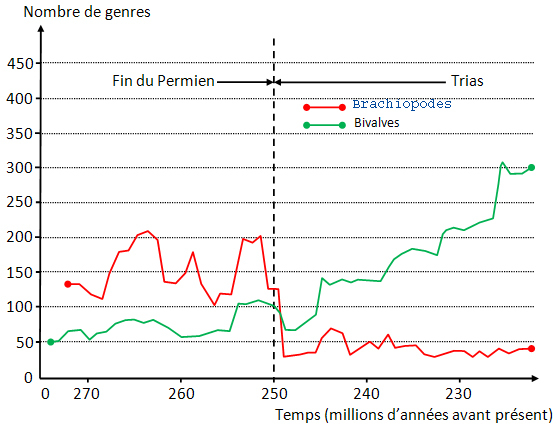
Les six principaux groupes de Brachiopodes
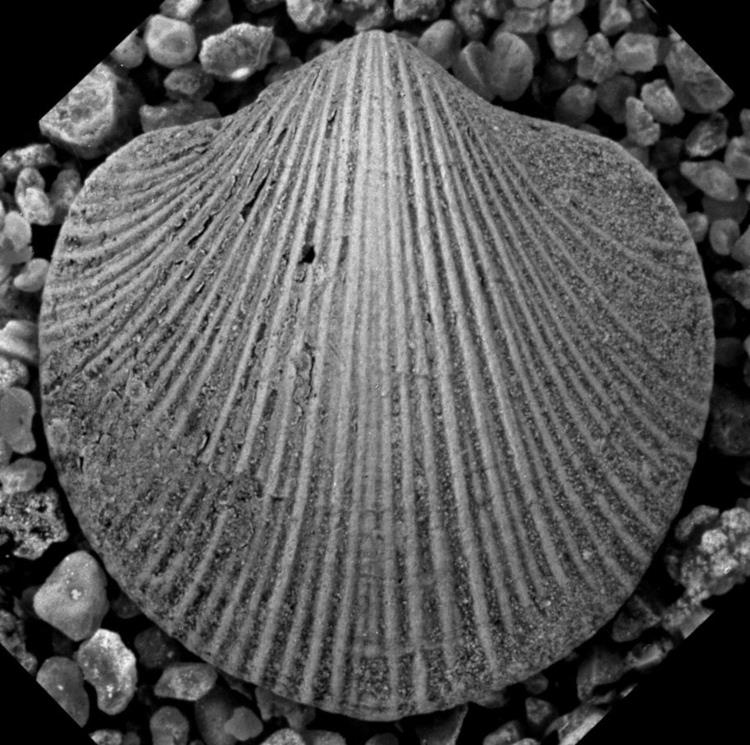
Orthida
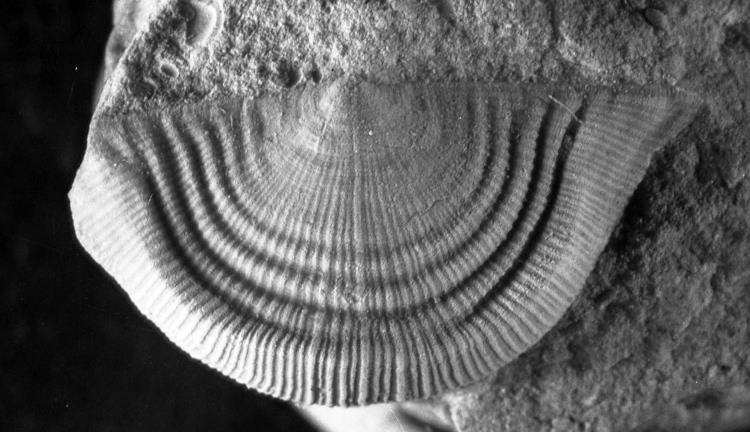
Strophomenida
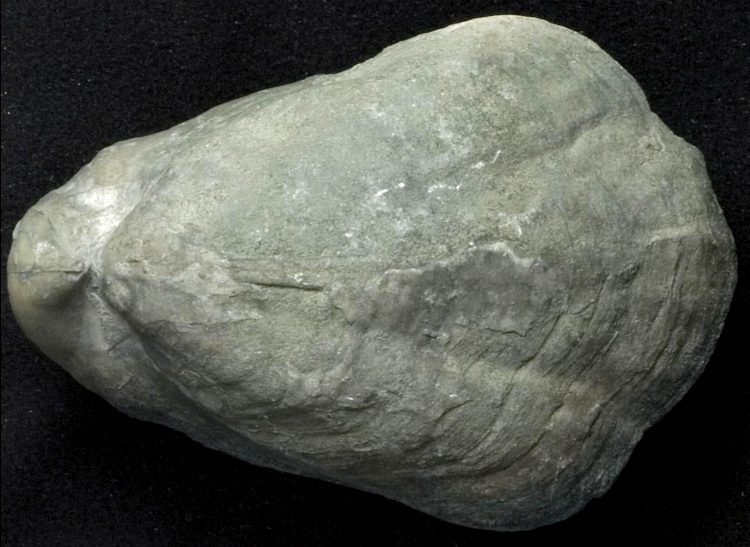
Pentamerida
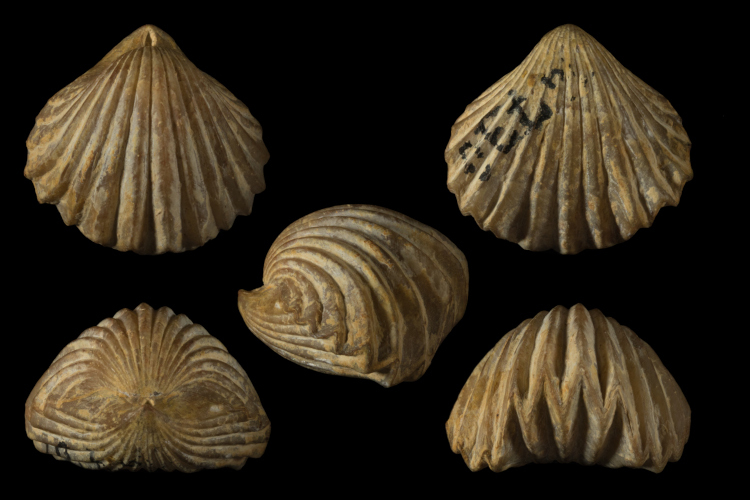
Rhynchonellida

Spiriferida

Terebratulida
Aujourd'hui, il ne reste plus que 330 espèces environ contre 30000 espèces fossiles. Les Brachiopodes sont peu connus car ils peuplent des mers froides ou les grandes profondeurs.
Alors qu'au Paléozoïque on trouvait environ 50 Brachiopodes pour un Bivalve, il n'y en a plus guère qu'un Brachiopodes pour 50 Bivalves de nos jours.
La "pierre bleue" du Tournaisien de Belgique
Le Tournaisien est le premier étage géologique du Carbonifère (ère Paléozoïque) qui s'étend de -359 à -347 millions d'années. Il doit son nom à la ville de Tournai en Belgique.
La Formation de Tournai consiste essentiellement en calcaires argilo-siliceux compacts, gris foncé à noirs, en bancs épais de 25 à 45 cm (en moyenne). Ces calcaires résultent de l’accumulation en mer peu profonde et chaude de nombreux organismes: des colonies de crinoïdes, des coraux coloniaux ou solitaires, des Brachiopodes et des Bryozoaires, des Trilobites, des Bivalves, des Nautiloïdes, ainsi que des restes d’algues calcaires.
Une quinzaine de mètres de calcaire, situés de part et d’autre d’un niveau repère d’origine volcanique (le Gras-Délit) sont extraits comme le "Noir de Tournai" (les bancs bleus), pour les bancs supérieurs et comme la "Pierre de Tournai" (les bancs gris), pour ceux de la base. Les bancs « bleus » prennent un adouci noir et sont essentiellement utilisés pour les dallages intérieurs. Les « gris » sont principalement destinés aux travaux extérieurs.
Sources
Comment valider cette Earth Cache
Petit rappel concernant les "Earth Caches": il n'y a pas de contenant à rechercher, ni de logbook. Il suffit de se rendre sur les lieux, de répondre aux questions ci-dessous. Vous pouvez loger en "Found it" et envoyez-moi vos propositions de réponses, soit via mon profil, soit via la messagerie geocaching.com (Message Center), et je vous contacterai en cas de problème.
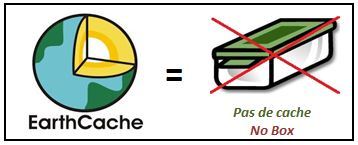
Localisation



Questions
- 1a: Citez les trois différences majeures entre les Brachiopodes et les Bivalves.
- 1b: Quelle est la fonction du lophophore?
- 2a: Au Tournaisien, quels sont les grands groupes de Brachiopodes encore existants?
- 2b: Il y a 252 millions d'années se produit un événement exceptionnel; quel est-il et quelle est la conséquence par la suite pour les Brachiopodes et les Bivalves?
- 2c: Où vivent les derniers Brachiopodes aujourd'hui?
- 3a: Quels organismes composent la "pierre bleue" de Tournai?
- 3b: Sur le bloc devant vous (sous le cercle rouge de l'image) se trouve un Brachiopode. Qu'est ce qui permet de l'affirmer?
- 3c: De quel groupe fait-il parti?
- 3d: D'autres fossiles sont présents sur le bloc, que peuvent-ils être?
- 4: Une photo de vous ou d'un objet vous représentant, est obligatoire pour valider cette Earth Cache.
Merci par avance de ne pas poster de spoiler dans vos logs!
Bon Geocaching!


This cache was placed during the Mega vent "Au Charbon" in Oignies GC9XH0Z. This gathering was wanted by the organizers as a moment of conviviality between enthusiasts of geocaching, nature and heritage. The desire is to allow each profile of player to be able to practice this leisure as he wishes and to share with others moments of gathering and sharing around an emblematic site of the mining basin of Pas-de-Calais: the pit tile of 9-9bis of Oignies.
Brachiopoda!
This Earth Cache aims to make you discover Brachiopods.
Brachiopods, Bivalves and Gastropods
Everyone knows about animals with shells. Many are marine, such as mussels, scallops and periwinkles, others are terrestrial, such as snails.
Mussels and scallops are Bivalves, periwinkles and snails are Gastropods. And what about the Brachiopods? They dominated the Bivalves and Gastropods during the Primary Era (the Paleozoic) and are now few in number.
What are the differences between Brachiopods, Bivalves and Gastropods?
A gastropod is an aquatic or terrestrial mollusc with a large ventral foot and usually a single-valved spiral shell (e.g. snail). They are easily distinguished from the Bivalves.
The class Bivalvia was created in 1758 by Linnaeus, and includes all animals with two-valved shells. In 1824, in a treatise on conchyliology (the study of molluscs with shells), scientists noted that some have two identical valves, and others two asymmetrical valves; they therefore created two groupings, the "regular bivalves" and the "irregular bivalves". It was only after 1850 and the study of living specimens of these "irregular bivalves" that it was demonstrated that these animals have nothing to do with the Bivalves. The class Brachiopoda was born.

A Gastropod

A Bivalve

A Brachiopod
What are the differences between Brachiopods and Bivalves?
Brachiopods have a plane of symmetry perpendicular to the plane in which the two valves abut, whereas Bivalves have a plane of symmetry passing between the two valves. In addition, Brachiopods have a foot (the pedicle) that allows them to cling to the substrate - rock for example.
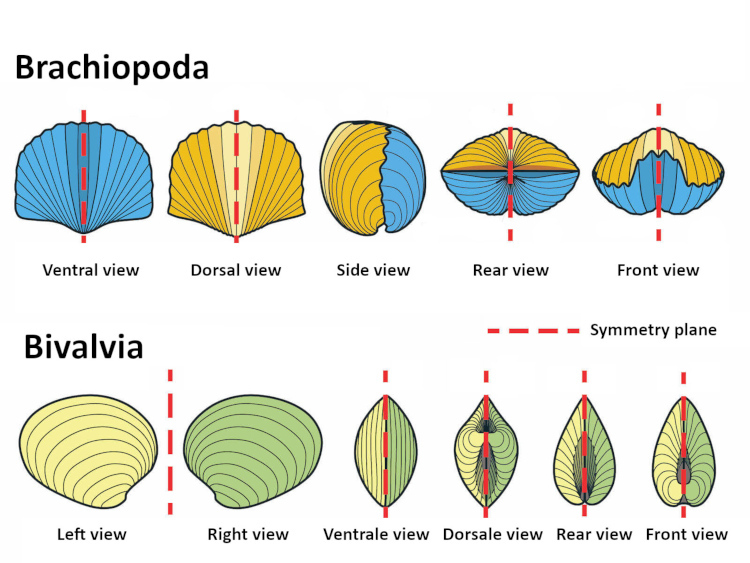
Symmetry of a Brachiopod and a Bivalve
Another major difference is the presence of the lophophore: a structure from which ciliated filaments project, which capture plankton and then carry it to the mouth (whereas bivalves feed by absorbing water, which is filtered inside the shell and then released).
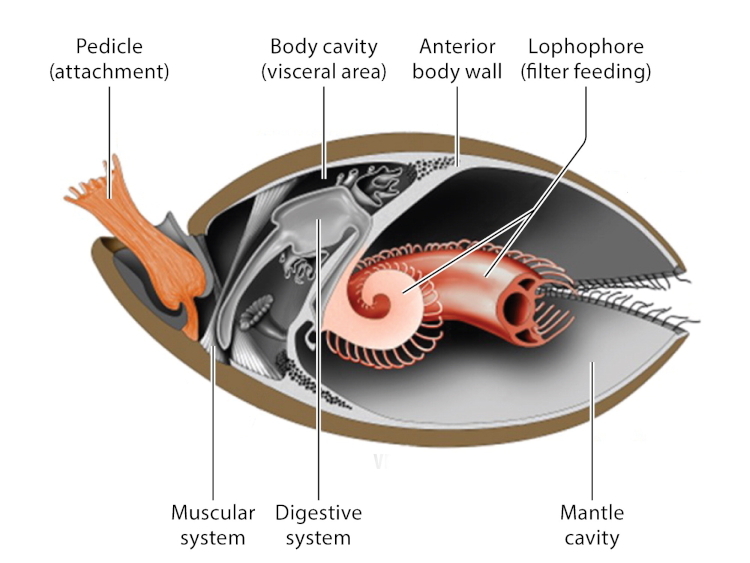
Anatomy of a Brachiopod showing the lophophore
Exceptionally, the calcified support of the lophophore can be observed in fossil form.

Fossil lophophore of a Brachiopod (Spiriferina rostrata, Lower Jurassic ~186 MA, France - Photo by Didier Descouens)
The evolution of Brachiopods
The first Brachiopods appeared in the Cambrian (541 million years ago), and diversified in the Ordovician (485 million years ago). This was followed by the first known major biological crisis, the Ordovician-Silurian (443 million years ago), and the number of genera fell. Despite this, brachiopods diversified in the Devonian (-419 million years ago), with 300 genera recorded (representing hundreds of species): this was the golden age of brachiopods. Despite the crisis at the end of the Devonian period (359 million years ago), they are still present and still supplant the Bivalves. The Pentameridae disappeared.
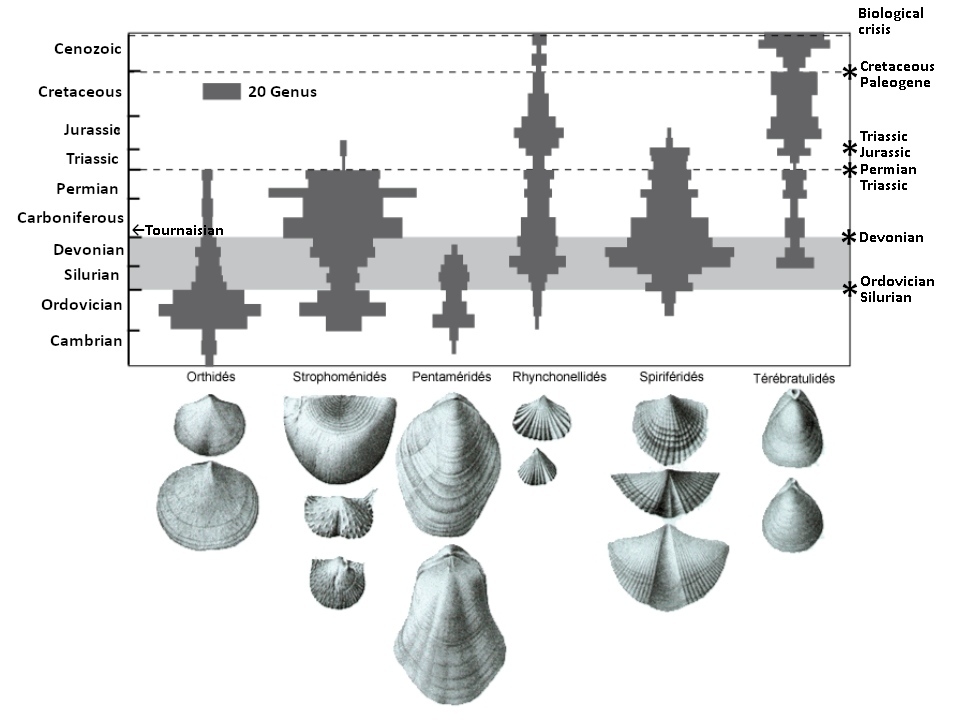
The Permo-Triassic crisis (-252 million years ago) saw 95% of marine species disappear. Many ecological niches became free, and the Bivalves took the lead. The Triassic-Jurassic crisis put an end to the Spiriferidae and Strophomenidae. The Cretaceous-Paleogene crisis (K/T crisis) further reduced the presence of Brachiopods; they subsequently diversified, mainly into Terabratulids.

The six main groups of Brachiopods

Orthida

Strophomenida

Pentamerida

Rhynchonellida

Spiriferida

Terebratulida
Today, only about 330 species remain, compared to 30,000 fossil species. Brachiopods are not well known because they live in cold seas or at great depths.
Whereas in the Paleozoic era there were about 50 Brachiopods for every Bivalve, nowadays there is hardly one Brachiopod for every 50 Bivalves.
The "blue stone" of the Belgian Tournaisian
The Tournaisian is the first geological stage of the Carboniferous (Paleozoic era), which extends from 359 to 347 million years ago. It is named after the city of Tournai in Belgium.
The Tournai Formation consists essentially of compact, dark grey to black siliceous-clay limestones in beds 25 to 45 cm thick (on average). These limestones result from the accumulation of numerous organisms in a shallow and warm sea: colonies of crinoids, colonial or solitary corals, Brachiopods and Bryozoans, Trilobites, Bivalves, Nautiloids, as well as the remains of calcareous algae.
About fifteen metres of limestone, situated on either side of a benchmark level of volcanic origin (the Gras-Délit), are extracted as "Noir de Tournai" (the blue banks), for the upper banks, and as "Pierre de Tournai" (the grey banks), for those at the base. The "blue" benches are softened to black and are mainly used for indoor paving. The "grey" ones are mainly used for exterior work.
Sources
How to validate this Earth Cache
A reminder about the "Earth Caches": there is no container to look for, nor a logbook. You just have to go to the place and answer the questions below. You can log in "Found it" and send me your suggestions for answers, either via my profile, or via the geocaching.com message center, and I will contact you if there is a problem.

Location
Bla



Questions
- 1a: Name the three major differences between Brachiopods and Bivalves.
- 1b: What is the function of the lophophore?
- 2a: In the Tournaisian period, which major groups of Brachiopods still exist?
- 2b: 252 million years ago an exceptional event occurred; what was it and what was the subsequent consequence for Brachiopods and Bivalves?
- 2c: Where do the last Brachiopods live today?
- 3a: What organisms make up the Tournai bluestone?
- 3b: On the block in front of you (under the red circle in the picture) is a Brachiopod. What makes this possible?
- 3c: Which group does it belong to?
- 3d: There are other fossils on the block, what might they be?
- 4: A photo of you or an object representing you is mandatory to validate this Earth Cache.
Thank you in advance for not posting spoilers in your logs!
Happy Geocaching!
